Panhandle Purps
Cannabinoid THC Dominant
THC 14 - 18%
CBD 0.46 - 0.64%
Effect Sleepy
Side Effect Concern
Flavor Butter
Panhandle Purps Strain
THC
CBD
Potency
This green weed with pale orange hues is produced from the Sherbet strain. Panhandle Purps is an Indica weed that consists of 14-18% of THC. The volumes of CBD don’t reach even the 0.7% mark, which is quite common for the majority of strains. The content of CBD compounds is 0.46 - 0.64%.
Terpenes:
- Myrcene
- Humulene
- Camphene
- Pinene
- Carene
- Limonene
- Geraniol
- Caryophyllene
- Pulegone
- Linalool
Panhandle Purps Strain Dominant Aromas
Myrcene takes up to 0.29% of the total content, which means it determines the dominant aromas of this marijuana strain. Combined with camphene, myrcene provides sweet grape tastes. Many people also report they experience butter flavors, which is the result of the camphene and humulene combination, which take 0.1% and 0.13%, respectively.
Why Users Love This Strain?
You shouldn’t take this strain if you feel sleepy because such feelings will only be boosted. Panhandle Purps suits conditions when you feel happy. In such settings, it will probably make you feel euphoric and aroused.
Panhandle Purps strain is known for the number of positive effects it provides for human health. In the right doses, it can help cope with:
- Migraines
- PTSD
- Alzheimer’s
- Muscle spasms
- Anxiety
- Fibromyalgia
- Hypertension
- Stress
- Anorexia
- Glaucoma
Remember that marijuana isn’t a panacea against all the mentioned health issues, it’s just an effective means to relieve pains related to them. Besides, don’t forget that any strain might cause some unpleasant effects you don’t want to experience in any conditions:
- Concern
- Fatigue
- Headache
- Thirst and dry mouth
- Dry eyes
- Insomnia
- Paranoia
- Panic attacks
- Low blood pressure
- Heightened sensory perception
Weed Growing Tips
Panhandle Purps weed strain requires quite common conditions for growing. If you want to get the yield of 10 - 15 Oz/plant (~ 400 g/plant), make sure to provide:
- A soil pH between 5.8 and 6.5
- 24 to 30 °C (75 to 86 °F) temperature range
- Appropriate watering
- Appropriate light regime.
Side Effects
Simply let us know how this strain tastes or write a detailed review.
Panhandle Purps Strain Cannabinoids
| THC | Tetrahydrocannabinol, or THC, is a major cannabis chemical compound. It is a psychoactive element that stimulates dopamine release and induces euphoria or happiness. THC-rich strains may be helpful with such conditions as lack of appetite, chronic pains , etc. It is considered to be the primary active marijuana component. | 14 - 18% |
| CBD | Cannabidiol, or CBD, is a major compound in cannabis, which is non-psychoactive. It is also proved to counteract the side effects of the second major component THC. CBD is widely used for medicinal purposes in rubs, oils and so on. It is helpful in muscle pain cases, may treat arthritis and migraines. Even Greeks used it against pain, while Queen Victoria applied it to get rid of menstrual cramps. | 0.46 - 0.64% |
| CBC | Cannabichromene, or CBC, is a minor cannabinoid, meaning that its quantity in cannabis is quite little. Though it has the same origin as CBD and THC, it is different in functions. Without any psychoactive effects, it is an efficient cannabis compound in combating acne and depression. CBC produces analgesic, antibacterial and anti-inflammatory effects. | 0.39 - 0.47% |
| CBG | Cannabigerol, or CBG, is one of the minor cannabis compounds in adult plants. On the other hand, young ones contain a lot of this antibacterial and anti-inflammatory component. During the growth, CBG is converted into different cannabinoids, mostly THC and CBD. The compound itself increases appetite and decreases eye pressure. | 0.64 - 0.74% |
| CBN | Cannabinol, or CBN, is a trace element in cannabis that is considered to be mildly psychoactive. It appears from oxidation THC, exposed to light and heat. CBN is mostly contained in old cannabis and in traditional hashish. It is effective against insomnia, bacterial infections and appetite loss. | 0.31 - 0.39% |
| THCV | Tetrahydrocannabivarin, or THC-V, is a compound contained in cannabis in trace amounts. Even though it is close to THC molecularly, it is different in effects. This compound may be psychoactive only in large amounts. THC-V reduces blood sugar, controls appetite, stimulates bone growth, etc. African Sativa strains are the richest in THC-V. | 0.1 - 0.31% |
Panhandle Purps Terpene Profile
| Carene | Carene (also known as Delta-3 carene) is a terpene found in rosemary, lemons, pines, and cedars, offering citrusy and cypress aroma. Studies on mice showed that carene provides anti-inflammatory effects, as well as promotes bone health and chronic pain relief. | 0.08% |
| Pinene | Pinene is one of the most widespread terpenes in nature, found in pine trees, basil, nutmeg, parsley, and rosemary. Cannabis containing terpene (alpha-pinene or α-pinene) boasts a strong pine scent. Pinene is responsible for anti-inflammatory, pain-relieving, and anti-anxiety effects. | 0.09% |
| Myrcene | Myrcene (also known as β-myrcene) is one of the most common terpenes found in cannabis, representing more than 20% of the modern marijuana terpene profile. Myrcene has a distinct earthy, musky flavor, resembling cloves. It is responsible for calming and soothing effects of weed. Myrcene is also found in hops, thyme, mango, lemongrass, guava melon. | 0.29% |
| Camphene | Camphene is terpene common for carrots, pepper, dill, fennel, nutmeg, thyme, as well as other fruits and vegetables. Camphene has a damp, pungent, herbal, minty aroma with pine undertones. In cannabis, mostly found in Indica strains. Camphene causes cooling sensations, having anti-inflammatory, antibiotic, antioxidant, analgesic, and antifungal effects. | 0.1% |
| Geraniol | Geraniol is a terpene initially contained in geraniums, as well as lemongrass, lemon peels, roses, blueberries, and carrots. The aroma is a sweet rose scent with notes of citrus. Geraniol features anti-inflammatory, antibacterial, antifungal, and neuroprotectant properties. It's rumored to have side effects such as allergic contact dermatitis or sensitive skin irritation. | 0.07% |
| Humulene | Humulene (also known as α-humulene) is one of the major terpenes found in cannabis, contributing to woody, earthy, spicy, herbaceous, and, mainly, floral aromas of cannabis. Used in modern medicine, humulene offers anti-inflammatory, antibacterial, and appetite suppressant effects, which have been well-researched by pharmaceutical companies. | 0.13% |
| Limonene | Limonene (also known as d-limonene) is the second most common terpene in nature and the third most common terpene in cannabis. It has a powerful citrus aroma and can be found in all citruses, including lemons, oranges, grapefruits, limes, juniper, etc. Limonene is known to elevate moods and provide anxiety, depression, and stress relief. | 0.08% |
| Linalool | Linalool (also known as beta linalool, linalyl alcohol, linaloyl oxide, and p-linalool) is one of the rarest terpenes found in cannabis, mostly in small quantities. Linalool is known for its spicy and lavender aroma, bringing relaxation and calming effects. It is also said to provide anti-inflammatory and analgesic properties that can be useful for athletes. | 0.03% |
| Pulegone | Pulegone is a less-common terpene found in peppermint and catnip, for example, with a sweet and minty aroma. In small amounts, pulegone could be found in some cannabis strains. It is reported to offer anxiety-relieving effects, increased cognitive performance, and sedative properties. Could remove dizziness. | 0.06% |
| Caryophyllene | Caryophyllene (also known as beta or b caryophyllene) is a terpene found in many herbs and spices, such as black pepper, basil, rosemary, and oregano. Cannabis high in caryophyllene delivers a strong spicy, peppery aroma, resembling cinnamon and cloves. Caryophyllene offers potent anti-inflammatory and sedative effects. | 0.07% |
| Total terpenes content | 1.00% |
Growing Info
Similar Strains
THC 10.54 - 15.44%
CBD 0.37 - 1.33%
Effect Uplifted
Flavor Apple
THC 15.2 - 20%
CBD 0.32 - 0.64%
Effect Happy
Flavor Lemon
THC 22 - 26%
CBD 0.31 - 4%
Effect Aroused
Flavor Mango
THC 23.5 - 19.25%
CBD 0.24 - 0.36%
Effect Euphoric
Flavor Mango
THC 12.62 - 16%
CBD 0.07 - 0.27%
Effect Tingly
Flavor Sweet
THC 7 - 9.5%
CBD 0.15 - 0.57%
Effect Talkative
Flavor Apple
THC 15 - 16%
CBD 1.12 - 1.24%
Effect Sleepy
Flavor Pineapple
THC 13.4 - 16.17%
CBD 0.02 - 0.29%
Effect Tingly
Flavor Lemon
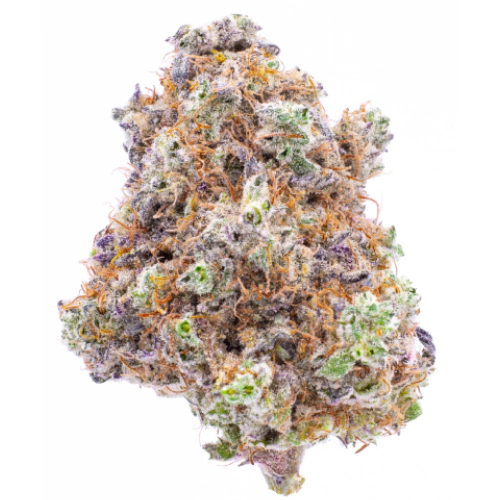
THC 13.5 - 15%
CBD 4.2 - 4.46%
Effect Sedated
Flavor Lemon

THC 19.67 - 22.33%
CBD 0.68 - 0.95%
Effect Relaxed
Flavor Spicyherbal
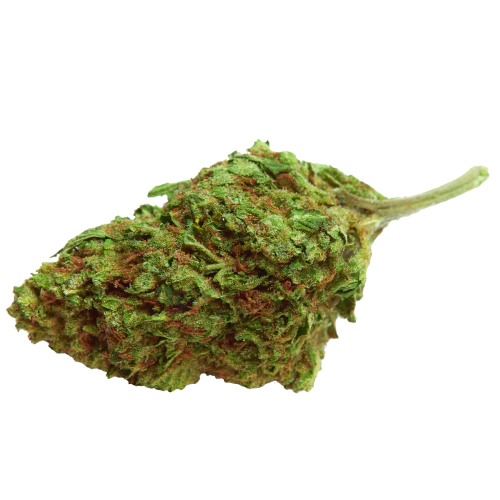

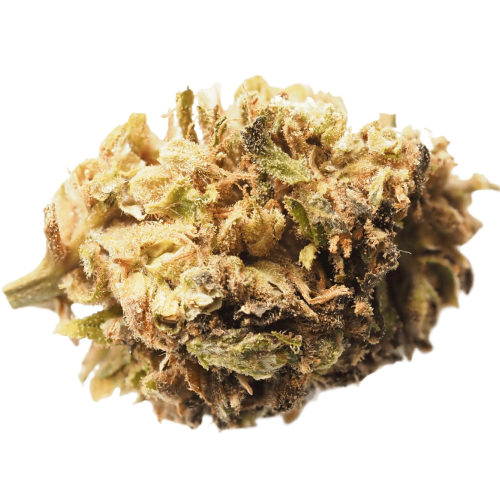
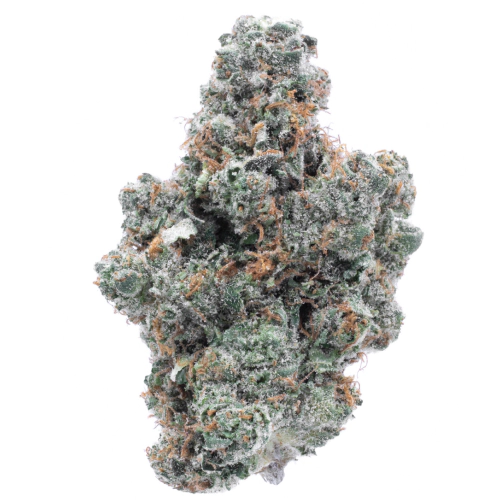
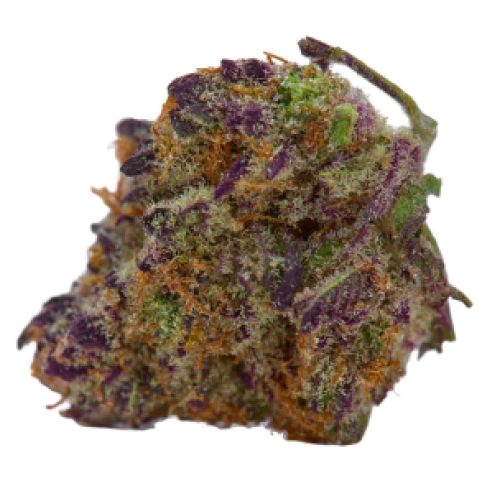
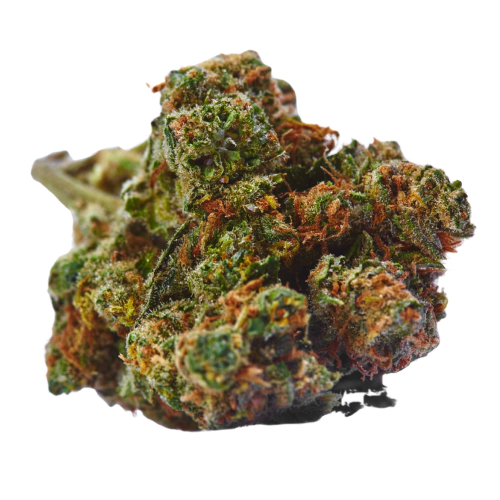

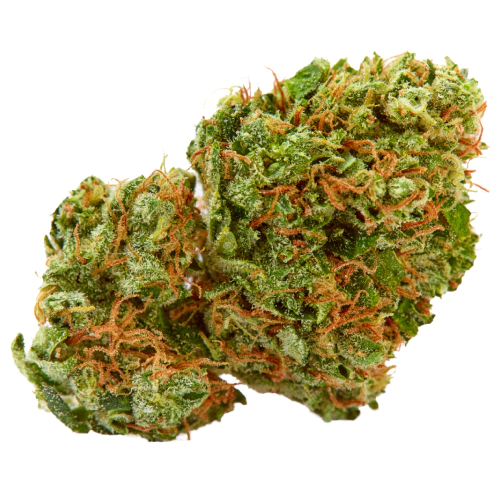
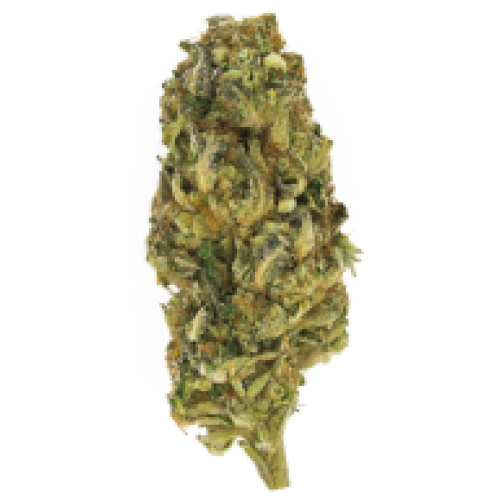
Be the first and share your opinion
Write a Review